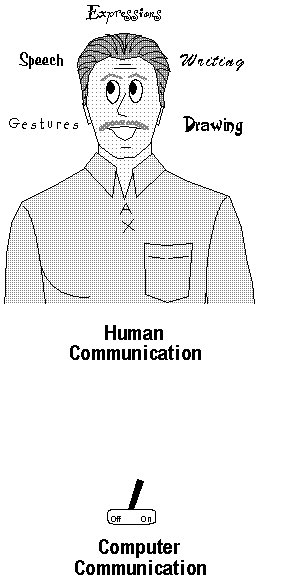Simple to Complex
Computers, like most complex things, are built from simpler parts. Consider your own body. It is a complex whole built from simpler parts called cells. Likewise, a computer is a complex whole built from simpler parts called switches.
To understand computers, you must understand how they communicate, or receive and send messages. Switches are the key to this understanding.
Human vs. Computer Communication
Whereas humans have many ways to communicate: physical gestures, facial expressions, speech, writing, drawing, etc., computers have one way:
switches!I'm not talking about the main power switch that turns the computer On and Off. I'm speaking of the millions of message receiving and sending
switches inside the computer that give it its awesome power.In the most elementary sense, a computer is merely a box filled with millions of tiny switches.
Combinations are the Key!
Since a switch has only two positions--off or on--it hardly seems possible that such a simple device could communicate with humans.
Yet, we'll see that by using combinations of switches, computer messages can take many forms: words, numbers, symbols, colors, pictures, even sound.
